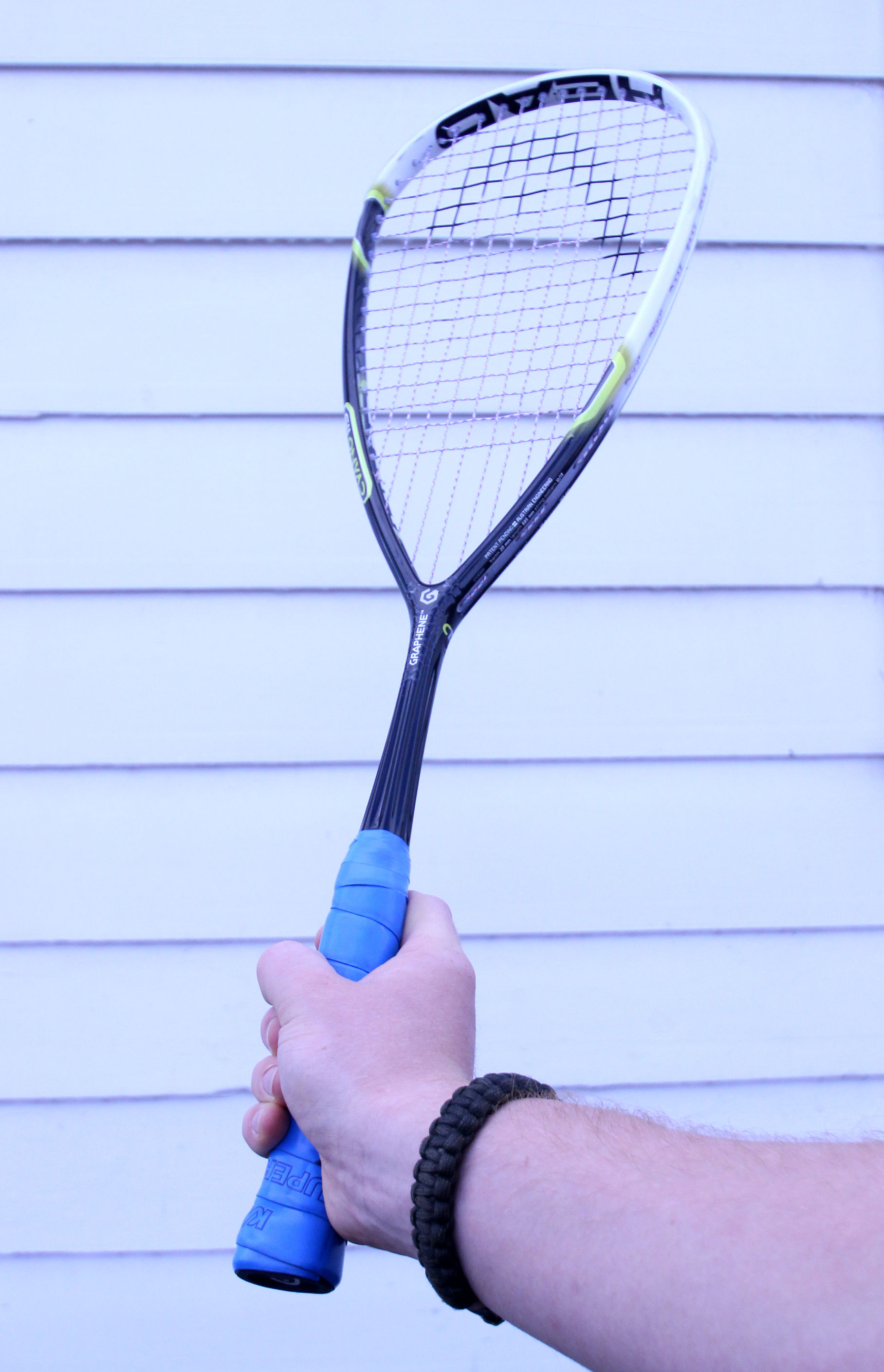Allowing for a full spectrum of shots and effects.
I fight on an almost daily basis with the players (particularly the juniors) about how they hold the racket.
It’s fiddly and it’s niggly and it’s not easy to practice but ignoring your grip is a very short-termist way of playing as it creates more and more problems the further you get in squash.
The most important factor of any grip in my opinion is that it allows for flexibility and manoeuvrability.
For more information on how hold the racket, go to our Squash School Page on the Grip here.

Range of shots: Drops and Lobs
The most common problem people have with their grip is that they hold it so that the racket face is ‘closed’ – meaning the racket face is either facing downwards or is horizontal. The grip should ensure that the face is facing upwards slightly, called an ‘Open’ racket face. The big problem comes when attempting to play a variety of shots. A bad grip might not stop you from hitting good straight drives or hitting the ball really hard, but it becomes a real problem when you start trying to use more areas of the front wall, particularly the top and bottom. The most difficult shot for players with bad grips is the lob shot, as they find it very hard to lift the ball when their racket face is naturally facing downwards or flat. They have to seriously adapt to have any chance of getting the required height for a good lob shot and this is difficult to do consistently and very hard when under any sort of pressure and not good given how important lobbing is!
It can also affect drops in a similar way. If someone has a closed racket face, they will find it difficult to get a consistent drop shot, as the ball will always want to go downwards when they hit it. You might not think this is a bad thing when aiming to play a drop shot but it means the margin for error is much smaller, as if they were to hit the ball when it’s a little bit lower on the bounce, it’s very likely to hit the tin. A player with this sort of racket face would have to always hit the ball when it’s quite high on the bounce to avoid hitting the ball down, which won’t always be possible or desirable.
It means you don’t have flexibility or manoeuvrability, which for me is the main job of the grip.
Errors & quality
As suggested above with the drops, having a bad grip can lead to errors when playing the drops but it can also have a negative impact on just about every shot. If the racket face is too closed, a player will struggle to achieve a high standard of length on a consistent basis, especially from the back corners. The racket face being flat or too closed will lead to the angle of the shot always being downwards, which isn’t always a bad thing. I’ve talked in other blogs about how it’s important to swing downwards, but the problem here is that it’s not deliberate. It’s worth saying one more time that your grip should allow you a full range of options, not restrict you to just doing one thing with the ball.
It’s never too late to change your grip. It really can revolutionise every aspect of your game, so do use our grip page to check how you’re getting on.
Leave a Reply